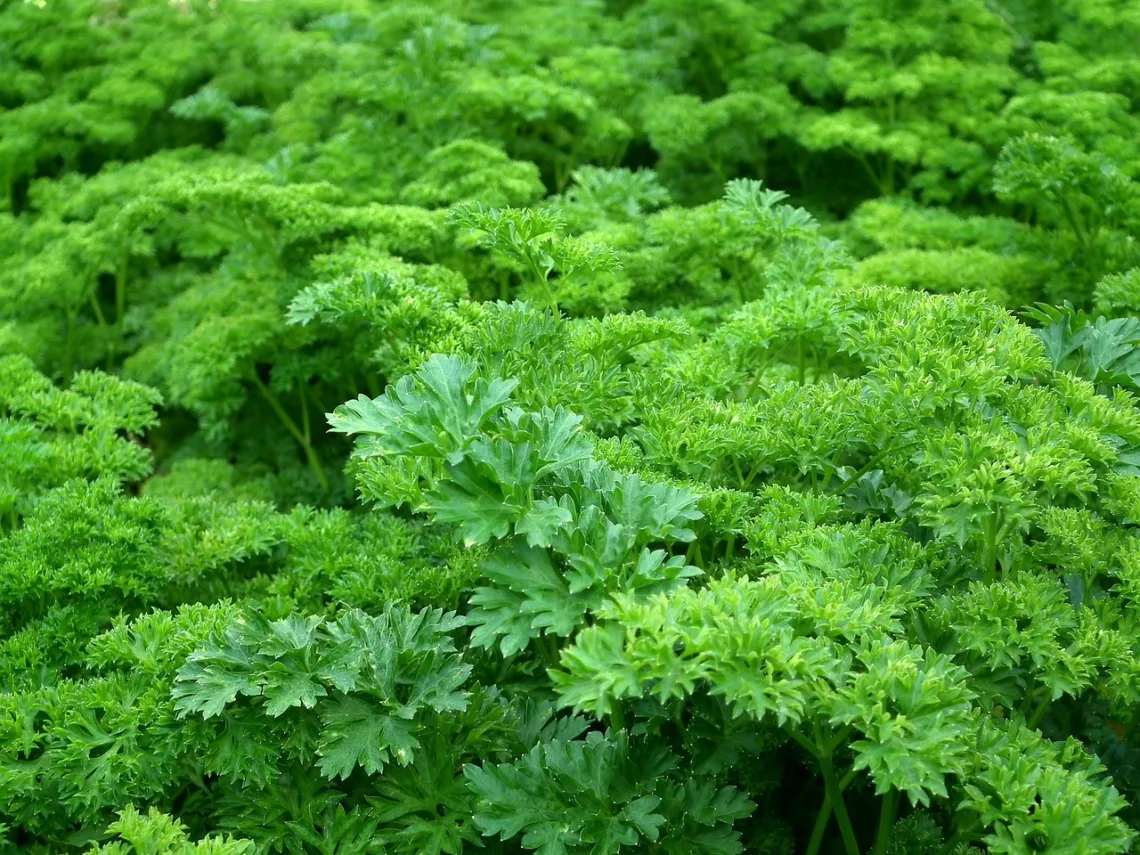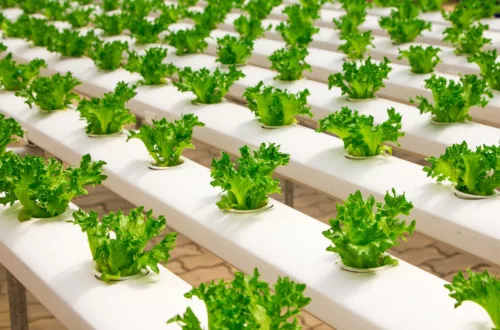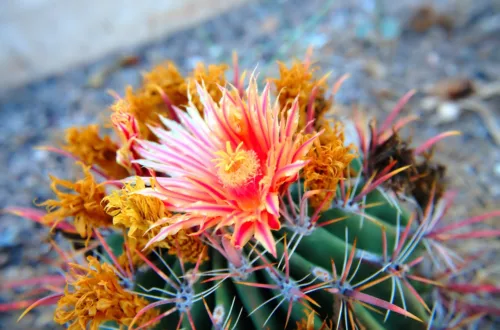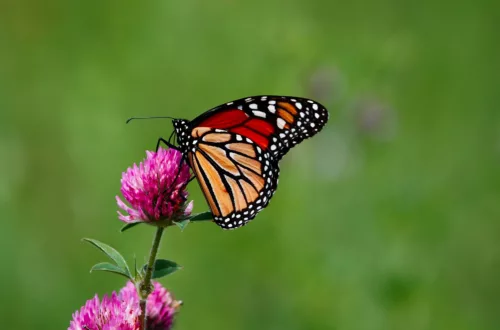Medicinal herbs have been used for centuries to treat various ailments and improve overall health. Growing your own medicinal herbs can be a rewarding and cost-effective way to incorporate natural remedies into your daily routine. In this article, we will explore some of the best medicinal herbs to grow and how to use them.
Disclaimer: This article is provided for informational purposes only and should not replace professional medical advice. Please consult with a qualified healthcare practitioner or herbalist before using any herbal remedies.
One of the best medicinal herbs to grow is chamomile. Chamomile is known for its calming properties and can be used to treat anxiety, insomnia, and digestive issues. It is easy to grow and can be harvested by simply picking the flowers and drying them. Chamomile can be brewed into a tea or used in a bath to promote relaxation.
Another great medicinal herb to grow is echinacea. Echinacea is a powerful immune booster and can be used to prevent and treat colds and flu. It is also effective in treating skin conditions such as eczema and psoriasis. Echinacea can be grown from seed and harvested by digging up the roots and drying them. The dried roots can be brewed into a tea or tincture.
Choosing the Right Herbs for Your Garden
When it comes to starting a medicinal herb garden, choosing the right herbs is crucial. Not all herbs are created equal, and some may not thrive in your particular climate or soil type. In this section, we’ll discuss some factors to consider when selecting herbs for your garden.
Considering Climate and Sunlight
The first thing to consider is your climate and the amount of sunlight your garden receives. Some herbs, like lavender and rosemary, are hardy perennials that can tolerate full sun and dry conditions. Others, like mint and lemon balm, prefer partial shade and moist soil.
Before selecting herbs for your garden, take note of the amount of sunlight your garden receives throughout the day. If you have a sunny spot, consider planting herbs like chamomile, echinacea, and calendula. For a shadier area, try planting herbs like valerian, comfrey, and marshmallow.
Soil Types and Drainage
Another important factor to consider is your soil type and drainage. Most herbs prefer well-drained soil, so if your soil tends to be heavy and clay-like, you may need to amend it with compost or sand.
If you have loamy soil, you’re in luck – most herbs will thrive in this type of soil. However, if your soil is too acidic or alkaline, you may need to adjust the pH level before planting.
Keep in mind that some herbs, like thyme and oregano, prefer drier soil, while others, like lemon balm and mint, prefer moist soil. When selecting herbs for your garden, make sure to choose ones that will thrive in your particular soil conditions.
By considering factors like climate, sunlight, and soil type, we can choose the right herbs for our medicinal herb garden. With a little bit of planning and care, we can create a thriving garden full of herbs that will provide us with natural remedies for years to come.
Herbal Medicine Basics
Growing medicinal herbs is a great way to take control of your health and wellbeing. It’s a simple and cost-effective way to access the healing power of plants. In this section, we will cover the basics of herbal medicine, including understanding medicinal properties and the role of herbs in traditional medicine.
Understanding Medicinal Properties
Medicinal herbs have been used for thousands of years for their health benefits. They contain compounds that have anti-inflammatory properties, can improve digestion, and boost the immune system. Some herbs also have antibacterial or antifungal properties, making them useful for treating infections.
When choosing herbs to grow, it’s important to understand their medicinal properties. For example, chamomile is known for its calming properties and can help with anxiety and sleep issues. Echinacea is a popular herb for boosting the immune system and fighting off colds and flu.
The Role of Herbs in Traditional Medicine
Herbs have played a vital role in traditional medicine for centuries. Native Americans, for example, have a long history of using herbs for medicinal purposes. They used herbs like echinacea and goldenseal to treat infections and wounds.
In traditional Chinese medicine, herbs are used to restore balance and harmony in the body. They are often used in combination with other therapies like acupuncture and massage.
Herbal medicine is a holistic approach to health that treats the whole person, not just the symptoms of a particular condition. It’s a safe and effective way to support your health and wellbeing, and growing your own herbs is a great way to get started.
By understanding the medicinal properties of herbs and their role in traditional medicine, you can make informed choices about which herbs to grow and how to use them for optimal health.
Popular Medicinal Herbs to Grow~ Best Medicinal Herbs to Grow
Growing medicinal herbs at home is a great way to have fresh, natural remedies at your fingertips. Here are some of our favorite medicinal herbs to grow:
Echinacea: The Immune Booster
Echinacea, also known as purple coneflower, is a beautiful flower that is well-known for its immune-boosting properties. (Latin) Echinacea purpurea is the most commonly grown variety and can be used to make herbal tea or tinctures. It is believed to stimulate the immune system and help fight off infections.
Lavender: For Relaxation and Skin Care
Lavender is a popular herb that is often used for relaxation and skin care. The beautiful flowers and fragrant essential oil can be used to make herbal tea, sachets, and skin care products. Lavender essential oil is believed to have a calming effect on the nervous system, making it a great herb to grow if you’re looking for natural ways to reduce stress and anxiety. Additionally, lavender oil can be used to soothe dry skin and skin irritation.
Chamomile: A Gentle Healer
Chamomile is a gentle herb that is often used for digestive issues and to promote relaxation. There are two main varieties of chamomile: German chamomile and Roman chamomile. Both can be used to make herbal tea or tinctures. Chamomile is believed to have anti-inflammatory properties and can be used to soothe digestive issues like bloating and cramping. Additionally, chamomile tea can be used to promote relaxation and help with sleep.
In conclusion, growing medicinal herbs at home is a great way to have natural remedies at your fingertips. Echinacea, lavender, and chamomile are just a few examples of the many medicinal herbs you can grow. Whether you’re looking to boost your immune system, reduce stress, or soothe digestive issues, there’s a medicinal herb out there for you.
Cultivating Your Medicinal Herb Garden~ Best Medicinal Herbs to Grow
Growing medicinal herbs in your own garden can be a great addition to your home. Not only can you have fresh herbs to use in your cooking, but you can also harvest and dry the leaves for medicinal use. Here are some tips for planting and maintaining your medicinal herb garden.
Planting and Maintenance Tips
When choosing which medicinal herbs to grow, consider your climate and the amount of sunlight your garden receives. Some popular medicinal herbs that are easy to grow include chamomile, lavender, echinacea, and peppermint. You can find these herbs in seed packets at your local garden center.
Plant your seeds in early summer or early fall, depending on the herb. Make sure to follow the planting instructions on the seed packet. Most herbs prefer well-draining soil and full sun, but some, like St. John’s Wort, prefer partial shade.
Once your plants have matured, make sure to water them regularly and fertilize as needed. You can also add mulch around the base of the plants to help retain moisture and prevent weeds.
Harvesting and Storing Your Herbs
When harvesting your herbs, make sure to pick the fresh leaves in the morning after the dew has dried. You can either use the fresh leaves immediately or dry them for later use.
To dry your herbs, tie small bundles of fresh leaves together and hang them upside down in a warm, dry place. Once the leaves are dry, store them in an airtight container in a cool, dark place.
When using your dried herbs, remember that they are more potent than fresh herbs. Use about one-third of the amount of dried herbs that you would use of fresh herbs in recipes or medicinal preparations.
By following these simple tips, you can cultivate your own medicinal herb garden and enjoy the benefits of fresh and dried herbs for years to come.
Addressing Common Health Issues with Herbs~ Best Medicinal Herbs to Grow
When it comes to addressing common health issues, medicinal herbs are a great natural alternative to pharmaceuticals. Here are some of the best herbs to grow for a variety of common health issues.
Herbs for Digestive Health
Many of us experience occasional upset stomachs, peptic ulcers, and other digestive issues. Luckily, there are several herbs that can help alleviate these symptoms. Peppermint, ginger, and chamomile are all known for their digestive benefits. Peppermint can help soothe an upset stomach and relieve gas, while ginger can help relieve nausea and vomiting. Chamomile is a great option for those with irritable bowel syndrome, as it can help calm the digestive system.
Natural Remedies for Pain and Inflammation
Herbal remedies can also be effective for pain relief and reducing inflammation. Turmeric is a popular herb that has anti-inflammatory properties and can help alleviate pain from conditions like arthritis. Willow bark is another herb that can help reduce pain and inflammation, and is often used as a natural alternative to aspirin. Additionally, ginger and peppermint can help reduce menstrual cramps.
Respiratory Support Herbs
The respiratory system can also benefit from herbal remedies. Eucalyptus is a great herb to grow for cold symptoms, as it can help relieve congestion and coughs. Thyme is another herb that can help with respiratory issues, as it has antibacterial properties and can help soothe a sore throat. Finally, licorice root is a great option for those with respiratory issues like asthma, as it can help soothe the airways.
By growing these herbs, we can have natural remedies at our fingertips to address common health issues. Incorporating these herbs into our diets and lifestyles can help us maintain a healthy and balanced body.
Specialty Herbs and Their Unique Benefits~ Best Medicinal Herbs to Grow
As herbal enthusiasts, we know that growing and using our own herbs can be a rewarding experience. Not only do we get to enjoy fresh herbs in our meals, but we also get to harness their medicinal properties for our health and wellness. In this section, we’ll explore a few specialty herbs and their unique benefits.
Calendula: More Than Just Beautiful~ Best Medicinal Herbs to Grow
Calendula officinalis, also known as pot marigold, is a beautiful and healing herb. Its bright orange and yellow flowers are not just pleasing to the eye, but also have medicinal properties. Calendula has anti-inflammatory properties that can help soothe skin irritation and promote wound healing. It’s commonly used in creams, salves, and ointments for skin conditions like eczema, psoriasis, and dermatitis. Calendula tea can also be used as a mouthwash to relieve sore throats and mouth ulcers.
Holy Basil: The Stress Reliever~ Best Medicinal Herbs to Grow
Holy basil, also known as tulsi, is a sacred herb in India and has been used for centuries in Ayurvedic medicine. This herb has adaptogenic properties, which means it can help the body adapt to stress and promote overall wellness. Holy basil has a calming effect on the nervous system, making it a great herb for stress relief and anxiety. It’s also known to boost the immune system and support respiratory health. You can enjoy holy basil as a tea, tincture, or in capsule form.
Aloe Vera: The Burn Plant~ Best Medicinal Herbs to Grow
Aloe vera is a well-known healing herb that’s commonly used for skin irritation and burns. Its gel-like substance has anti-inflammatory properties that can help soothe sunburns, insect bites, and other skin irritations. Aloe vera is also known to promote wound healing and can be used to treat minor cuts and scrapes. You can use fresh aloe vera gel directly from the plant or purchase aloe vera gel or cream from your local health food store.
As with any herbal remedy, it’s important to do your research and consult with a healthcare professional before using any new herbs. By growing and using these specialty herbs, we can enjoy their unique benefits and promote our health and wellness in a natural way.
Safety and Precautions~ Best Medicinal Herbs to Grow
When it comes to growing medicinal herbs, it’s important to understand the potential side effects and take necessary precautions. In this section, we’ll discuss some important safety tips to keep in mind.
Understanding Potential Side Effects
While herbs can provide many health benefits, they can also have side effects. It’s important to be aware of these potential side effects before using any medicinal herbs. Some common side effects include digestive issues, headaches, and allergic reactions. If you experience any of these symptoms, it’s important to stop using the herb and seek medical advice.
It’s also important to note that some herbs can interact with certain medications. If you’re taking any medications, be sure to talk to your doctor before using any medicinal herbs.
When to Seek Medical Advice~ Best Medicinal Herbs to Grow
If you experience any severe side effects or have an allergic reaction to an herb, seek medical attention immediately. It’s also important to seek medical advice if you’re considering using an herb as a long-term treatment for a medical condition.
In addition, if you’re pregnant or breastfeeding, it’s important to talk to your doctor before using any medicinal herbs. Some herbs can have negative effects on the developing fetus or infant.
Overall, while medicinal herbs can provide many health benefits, it’s important to use them safely and responsibly. By following these tips and talking to your doctor, you can ensure that you’re using herbs in a way that supports your entire body’s health and well-being.
Integrating Herbs into Daily Life~ Best Medicinal Herbs to Grow
Growing your own medicinal herbs is an amazing way to take control of your health and wellness. But what do you do with all those herbs once they’re harvested? Integrating herbs into your daily life is easier than you might think. Here are a few ideas to get you started.
Herbs in the Kitchen~ Best Medicinal Herbs to Grow
The kitchen is the perfect place to start incorporating your medicinal herbs. Not only can you add them to your meals for flavor, but you can also reap their health benefits. For example, rosemary is a delicious herb that can be used in many dishes, and it’s also known to improve memory and concentration.
Oregano is another herb that is commonly used in cooking, and it has antibacterial and antifungal properties. You can use it to make a delicious pasta sauce or sprinkle it on top of your pizza.
When cooking with herbs, it’s important to use fresh herbs whenever possible. Fresh herbs have a stronger flavor and more nutrients than dried herbs. You can also use olive oil infused with herbs to add even more flavor to your dishes.
Incorporating herbs into your daily life is a simple and enjoyable way to improve your health and wellness. Whether you use them in the kitchen, make a tea, or use them in a homemade skincare product, the possibilities are endless.







